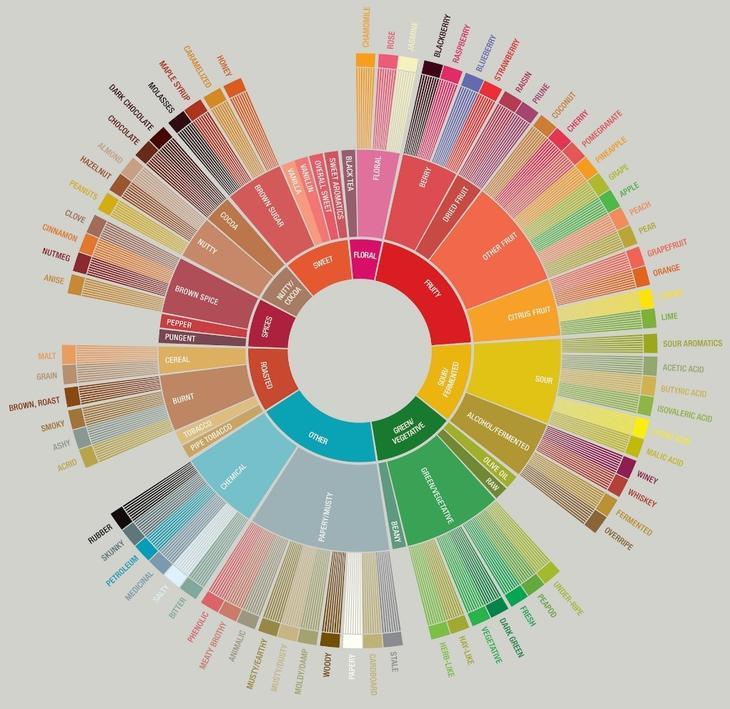
Flavor Profiles in Coffee
Share

(The Coffee Tasters Flavor Wheel, by the Specialty Coffee Association of America and World Coffee Research)
Coffee is the world’s favorite drink. Much like with wine, people become professionals in sniffing out bad quality coffee-- They develop their palates and are able to tell apart a dozen different smells and flavors in one cup of coffee that someone else might describe as… “good”.
Luckily, coffee is a much more accessible drink than wine and we all enjoy it at least once a day. However, the experience of coffee can be enhanced to the point that having your coffee is much like eating an exotic dessert: if we learn how to spot all the different tastes and aromas, we can learn to enjoy our coffee more.
Our sense of smell plays a big role in how things taste. If you’ve ever heard the rumor that we only use 10% percent of our brains well, although that one is false, it could easily apply to our sense of smell. We greatly underestimate just how important our nose is to tasting things, while our tongue can distinguish between about 5 different tastes (sweet, salty, bitter, and sour), we can identify hundreds of different tastes and smells with our nose.
To help you put a word to the taste or the aroma, we’ve compiled a short list of words that’ll help you discover different flavors and qualities in your coffee:
Watery. To describe a coffee that feels too diluted. Often a negative quality.
Body. Word used to refer to how the coffee feels in your mouth. It can be watery, thick, light, etc.
Winey. A taste that is reminiscent of red wine, particularly for its acidity.
Thin. This word is used to describe coffee that’s under extracted and wasn’t allowed to develop its full taste.
Mouthfeel. Similar and often the same as body. The way a particular coffee feels in your mouth.
Finish. The realized taste of coffee. The finish is sensed once the coffee has been in your mouth for a few seconds; it’s the moment between the first impression and the aftertaste.
Clean. When a coffee feels well balanced and doesn’t have any glaring faults like bitterness, sourness, and so on, it is said it is clean.
Buttery. Describes a mouthfeel that feels much like melted butter.
Acidity. A very important quality of coffee, acidity can range from very low to very high. A cup with mild yet pleasant acidity is said to be bright.
Besides these terms, one should also be aware of the use of adjectives that describe flavors in coffee that remind us of other flavors; these comparisons are vital for us to get a complete picture of a coffee’s taste.
These are hints and notes.
Hints are used for flavors that are more difficult to pin down, like hints of vanilla or cherry.
Notes, on the other hand, are more obvious. Floral, caramel, and woody notes are easier for us to notice and point out.
Those are some of the words used to describe a coffee’s flavor profile. Try it next time you drink coffee: sit with a notepad next to you. As you drink the coffee, try to focus first on the first impression, next on each and every little detail of the coffee’s flavor, and then on the aftertaste. Write down how you would describe it -trying to use the words we just taught you- and there you have it: a flavor profile!
Flavor profiles, however, usually try to keep it short and simple, accentuating a coffee’s most salient features or the most attractive ones. It’s very important to be able to understand at least some of these words if you want to get a glimpse of how a coffee will taste before you buy it!
